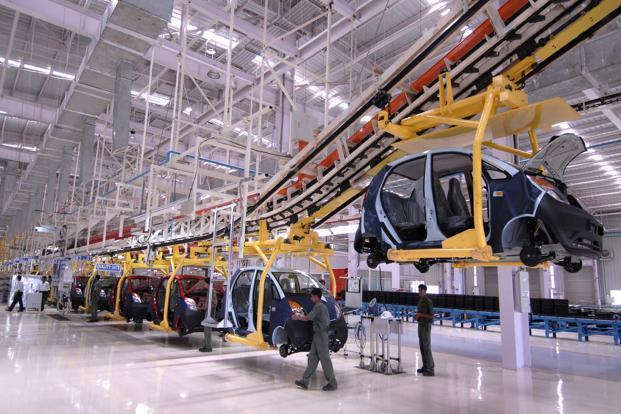News
Nano factory could be used to build other Tata vehicles
The Tata Motors factory at Sanand, set up in 2010 to build the world's least priced car, the Nano, entailed an investment of 2,000 crore rupees. The factory was configured to produce 250,000 units of the Nano each year and the assembly line was tailored to suit the low cost car. With an eye on the future, Tata Motors even configured the factory with enough capacity to expand production to 350,000 units per annum.
The Nano has been a dud seller for Tata Motors, with each passing month's sales figures only reaffirming this fact. For the first five months of the 2013, Tata Motors has been able to sell about 6,500 units of the Nano. With that, production at the Sanand factory fell to an all time low in April 2013, with Tata Motors building less than 1,000 units of the Nano. This, in a factory that can churn out 250,000 units a year or about 20,000 units a month.
While the Nano project shifted from Singur to Gujarat, vendors who had begun setting shop around the proposed Tata Motors factory at Singur followed the car maker to Sanand. These vendors are now a disaffected lot as the the low volumes of the Nano has meant that many vendors are stuck with idle capacity. Most vendors have retrenched a sizable chunk of their workforce too. Tata Motors, realizing the gravity of the situation, is now working on a new plan to boost production at Sanand, thereby utilizing the factory's capacity and also giving its vendors an opportunity to revive operations.
Tata Motors is considering the assembly of its high volume Ace mini pick up truck and other passenger vehicles from the Sanand factory. Incidentally, the Ace and Nano rolled out side by side, from Tata Motors' Pantnagar factory, before the Sanand factory went on stream. So, if the Ace is produced alongside the Nano at Sanand, it promises to be a case of history repeating itself. Here is the statement that Tata Motors has released to MoneyControl,
On our production capacity plans, we are considering various options for optimally utilizing our manufacturing capacities for our PV and CV brands. As our production goes up, so will that of our vendors. We have stood by our vendors in an exemplary manner, as was seen during the transition from Singur to Sanand. So, will it be in the future too.
So, what happens to the Nano then?
Tata Motors clearly hasn't given up on the world's least priced car. Later this month, the 2013 edition of the Nano, a car that will bring a host of changes to the inside and outside will be launched in India. The 2013 Nano is a facelifted model and could do its bit to reinvigorate interest amongst prospective buyers.
Tata Motors also has other variants of the Nano under development. The Nano CNG is expected to follow the 2013 Nano Facelift while a diesel engined version of the Nano is expected to arrive in early 2014. Tata Motors is also looking at increasing exports of the Nano as a measure to boost volumes.
Image courtesy LiveMint



















